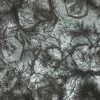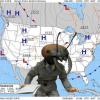Does anyone think it's worth making a list of times of day of typical flights? This is what I have based on my experience and literature:
Pogonomyrmex californicus: 1100-1300
Solenopsis invicta: 1300-1500
Veromessor: mid-morning
Myrmecocystus: evening
Camponotus: morning
Formica francoueri: 1000-1200
Pheidole: pre-sunrise
Edited by Foogoo, June 17 2015 - 3:36 PM.
















